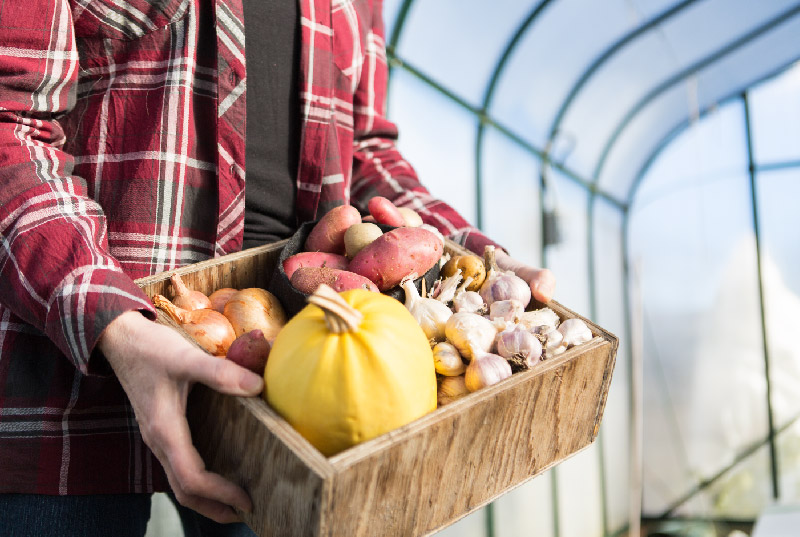
I help gardeners grow
& beginners blossom.
No seed left behind,
no soil unturned.
Together we can have lots of fun growing
great gardens using simple practical tips.
- Featured in -





Start saving & storing your garden seeds for a more more sustainable future
SIGN UP to get the FREE Seed packet PDF
X CLOSE

Propagate & Grow Raspberries from pieces… plus willows and roses
Growing Raspberries and other woody plants from parts this winter

One-year old fig twigs will root in a single season and often make fruit the very next year. Here a fig is making huge leaves a month after sticking a twig in a pot of soil in the greenhouse. Large leaves indicate the small cutting has rooted.
Winter cuttings are fantastic! Pussy willow, curly willow, raspberries, grapes and roses all grow easily from cuttings. If you take cuttings in winter, you’ll grow your edibles and decorative woody plants from cuttings in a few weeks even though there it is still snow outside!

Have you got plans to buy a clump of pussy willows at the next seedy Saturday or market? Did you get a piece of curly willow in your Valentine’s bouquet? Or maybe, like me, your neighbour gave you some really amazing raspberries clippings from their garden? Here is how you can turn a woody plant into 100 woody plants easy peasy.
Multiply plants in your kitchen or greenhouse now with these easy steps:
- Take cuttings. These are just long branches cut from the plant you want to propagate. Take a few long cuttings. In the case of raspberries the cuttings are the branches you remove when you are thinning out your crop. Thinning usually means leaving only a single new stem per square foot. Do this any time up to just before they start budding in spring. Other shrubs have thicker older wood and new wood on the tips. The newer growth is usually only a year old so is the best size for making new plants.

- Shorten the cuttings to fit your containers. I usually like to leave three buds – with one cut made just below the lowest bud. After the lowest cut is made rub off the lowest bud with your finger so it doesn’t try to grow leaves and instead grows roots.
- The bottom of the twig is then dipped lightly into Stim-Root, a rooting powder, to speed up rooting.Then stick the cutting into a tray filled with potting mix. I like pro-mix.


4. Moisten soil throughly. You don’t want dry points or pockets. Cover, even if it is in your greenhouse, if it is still cold outside in your area. I use Agribon as a floating row cover over my new cuttings and I set the trays over a heating mat so they stay evenly warm under the trays. This encourages them to root.

Floating row cover keeps heat and humidity within your cutting bed even when it is snowing and cold outside. I also use a heat mat to stabilize the heat under the cuttings

The leaves on the cuttings emerge first and then the roots form. I pulled this one out of the tray to show the small roots forming on my curly willow.
5. As the buds break the new leaves start to show. Eventually the roots also form. Keep cuttings moist at all times. Because I use high porosity pro-mix they don’t usually get too soggy at this state. They stay evenly moist until I am sure they have rooted.

These blackberry cuttings started to leaf out within a month of sticking the cuttings. I know they are rooting because the leaves look so good.

I started this grape twig in late February 2018 and it was well rooted by spring when I planted it out in the garden. Grapes and other woody plants come true from the pieces used to start them. Unlike seed, which can be variable unless it is a named hybrid, pieces of plants are clones so they come true to their parent. This grape, Red Flame, is a seedless red grape I bought in Victoria years ago and I love the sweet fruit so am multiplying it for resale.
6. When the small cuttings are forming roots I put them in their own pot to grow them on further. These can then be planted outdoors in the spring when the soil is warmer. If I am not sure is the temperatures are stable I can cover the outdoor rooted cuttings with floating row cover again once they are planted outside.

Willows are so easy to root they sometimes take root when plunged into a pot of soil in a spring display. Take advantage of this speedy rooting to multiply pussy willows or curly willow plants you buy at a Seedy Saturday event or from a florist
Are you hoping to save the big cost of buying plants for a new or large property this year? If so, use your greenhouse or grow area to root cuttings from trees, shrubs, vines or ornamental plants such as the Prairie Joy rose pictured here. Plants you root yourself are going to be hardier than plants purchased with a grafted root. Gardening is so much fun and making your own plants just adds to the joy!

If a friend or neighbour has an amazing kind of Raspberry that you really want to share, now is the time to pop over and grab a few cuttings to multiply into plants before spring. PS It doesn’t matter if you know the name or not. If it is good at a neighbours it will be good for you too because woody plants spread by cuttings come true to type.
Donna Balzer is the Brand Ambassador for BCGreenhouse Builders and she has two greenhouses in her big backyard.

What Would Donna Do?
Get my growing and gardening tips and pointers throughout the season.


















0 Comments